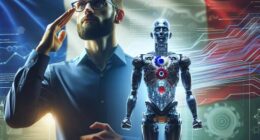OpenAI’s New AI Image Model is Now 50x Faster
OpenAI has unveiled a groundbreaking advancement in AI image generation with the introduction of Simplified Continuous Time Consistency Models (SCM). This innovative method promises to dramatically enhance the speed and efficiency of creating high-quality images, potentially redefining real-time applications across various industries. The potential impact is vast, especially in fields that necessitate instantaneous image processing and dynamic visual content creation.
Gone are the days when AI image generation was marked by sluggish performances and hefty computational demands. Traditional diffusion models, although impressive, often felt akin to running a marathon in quicksand—slow and resource-intensive. However, with SCM, OpenAI has flipped the script, presenting a model that is approximately 50 times faster than its predecessors.
OpenAI SCM can generate stunning images in a mere 0.11 seconds! This leap in efficiency not only improves the user experience but also unlocks a realm of possibilities across industries. Applications span from instant photo editing to dynamic video effects. Read on to explore how this innovative technology is set to redefine the boundaries of what’s achievable in the realm of real-time applications.
Traditionally, AI image generation has relied heavily on diffusion models, which involve a slow, iterative noise reduction process. These models demand substantial computational resources, rendering them impractical for real-time applications. The requirement for significant processing power and time has hindered their use in dynamic environments where speed is crucial.
These limitations have long been a bottleneck in the development of responsive AI-driven visual applications, obstructing progress in realms such as augmented reality, real-time video editing, and interactive digital experiences.
Unleashing New Possibilities with SCM
SCM signifies a substantial leap forward in AI image generation technology. By generating images in just two steps, SCM is approximately 50 times faster than traditional diffusion models. This method achieves high-quality image generation in about 0.11 seconds on specialized hardware, using significantly less computational power.
The efficiency of SCM unlocks new opportunities for real-time applications, including instant photo editing, real-time video effects, and rapid image creation for interactive media.
The arrival of SCM aids real-time image generation, paving the way for innovative applications across numerous sectors. From instant photo editing to quick image creation for apps and games, the potential applications are vast. The capability to process images instantaneously elevates user experience and broadens the possibilities within digital environments.
Potential applications include:
- Augmented reality experiences
- Interactive video editing
- On-demand digital content creation
These applications represent merely the tip of the iceberg, as developers and researchers continue to delve into the full potential of SCM technology.
SCM and Google’s Genie: A Powerful Alliance?
While OpenAI focuses on rapid image generation with SCM, Google’s Genie stands as a parallel advancement in AI, capable of crafting interactive environments from simple prompts. Genie leverages unsupervised learning from extensive video data, eliminating the need for labels or instructions.
Combined with SCM, there exists the potential for crafting real-time immersive experiences by merging swift image generation with interactive content creation. This synergy could lead to groundbreaking advancements in:
- Real-time interactive storytelling
- Virtual reality experiences
- Live digital performances
The amalgamation of these technologies sets the stage for more sophisticated and responsive AI-driven visual experiences.
The Promising Future of AI-Driven Technologies
The future of AI-driven technologies is promising, with SCM paving the way for real-time virtual environments and interactive worlds. Instant video game creation, augmented reality enhancements, and dynamic digital art are just a few of the exciting possibilities.
As these technologies evolve, they hold the potential to transform fields ranging from entertainment to education, including:
- Innovative learning environments
- Live virtual collaboration spaces
- Dynamic event simulations
The accelerated pace of image generation enabled by SCM could also introduce new challenges in content moderation and digital authenticity, thus necessitating the development of robust verification tools and ethical guidelines.
Invitation for Community Engagement
OpenAI invites the community to explore SCM’s potential applications and provide feedback to assess its impact. Engaging with users will aid in identifying new opportunities and refining the technology to meet diverse needs. As AI continues to advance, collaborative efforts will be key in unlocking its full potential.
Key areas for community involvement include:
- Collaborative application development
- Ethical impact assessments
- Technological innovation workshops
OpenAI’s introduction of Simplified Continuous Time Consistency Models represents a significant milestone in AI research. By allowing high-speed image creation with reduced computational demands, SCM sets the stage for a new era of real-time applications and immersive experiences. As the technology matures and integrates into various applications, it harbors the potential to transform our interaction with digital visual content, opening new frontiers in creativity, education, and technological innovation.










